
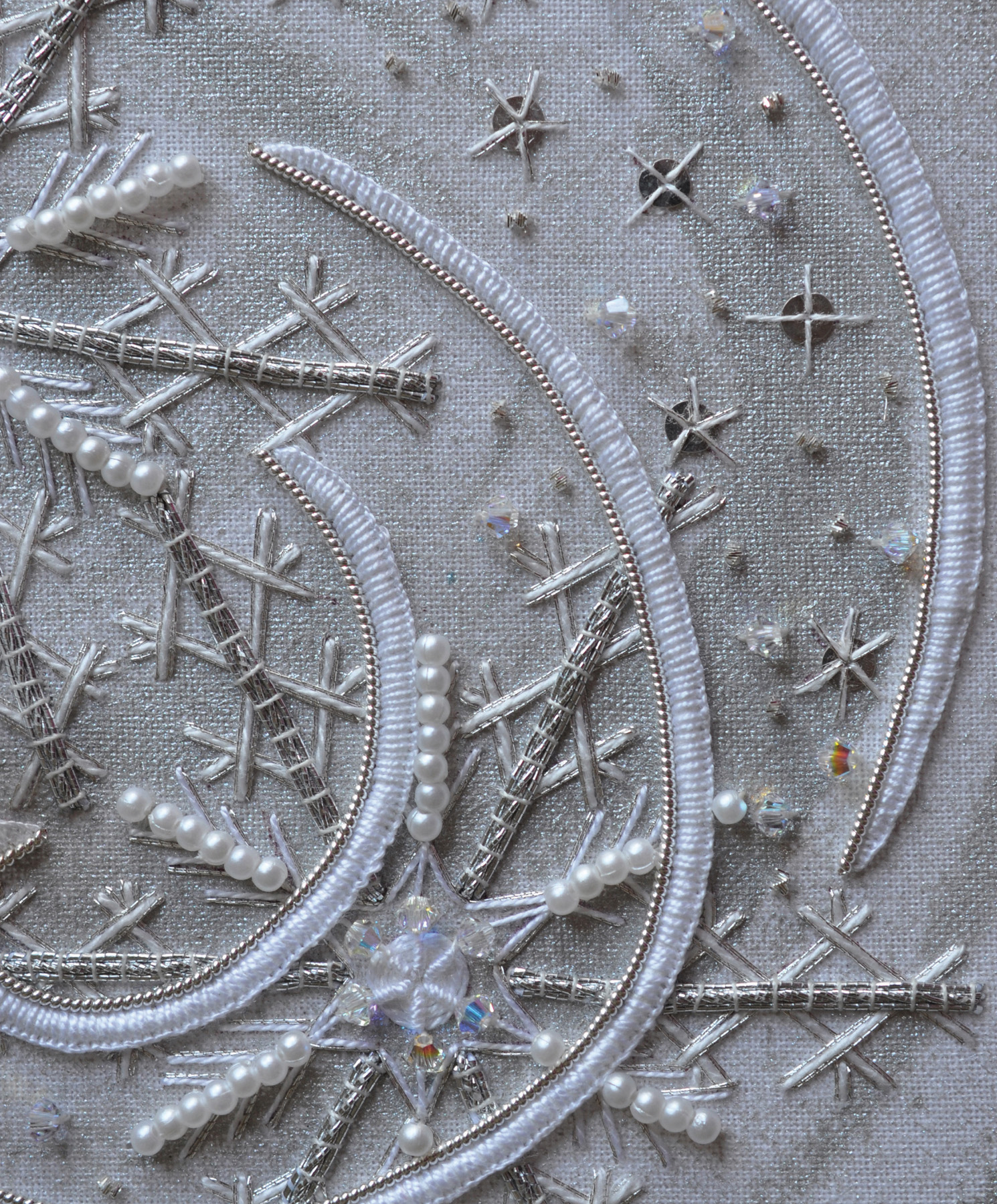
S TUMPWORK
EMBROIDERY
Techniques and projects
Helen Richman


First published in 2017 by
The Crowood Press Ltd
Ramsbury, Marlborough
Wiltshire SN8 2HR
www.crowood.com
This e-book first published in 2017
Helen Richman 2017
All rights reserved. This e-book is copyright material and must not be copied, reproduced, transferred, distributed, leased, licensed or publicly performed or used in any way except as specifically permitted in writing by the publishers, as allowed under the terms and conditions under which it was purchased or as strictly permitted by applicable copyright law. Any unauthorised distribution or use of thistext may be a direct infringement of the authors and publishers rights, and those responsible may be liable in law accordingly.
British Library Cataloguing-in-Publication Data
A catalogue record for this book is available from the British Library.
ISBN 978 1 78500 295 3
Photography: Helen Richman
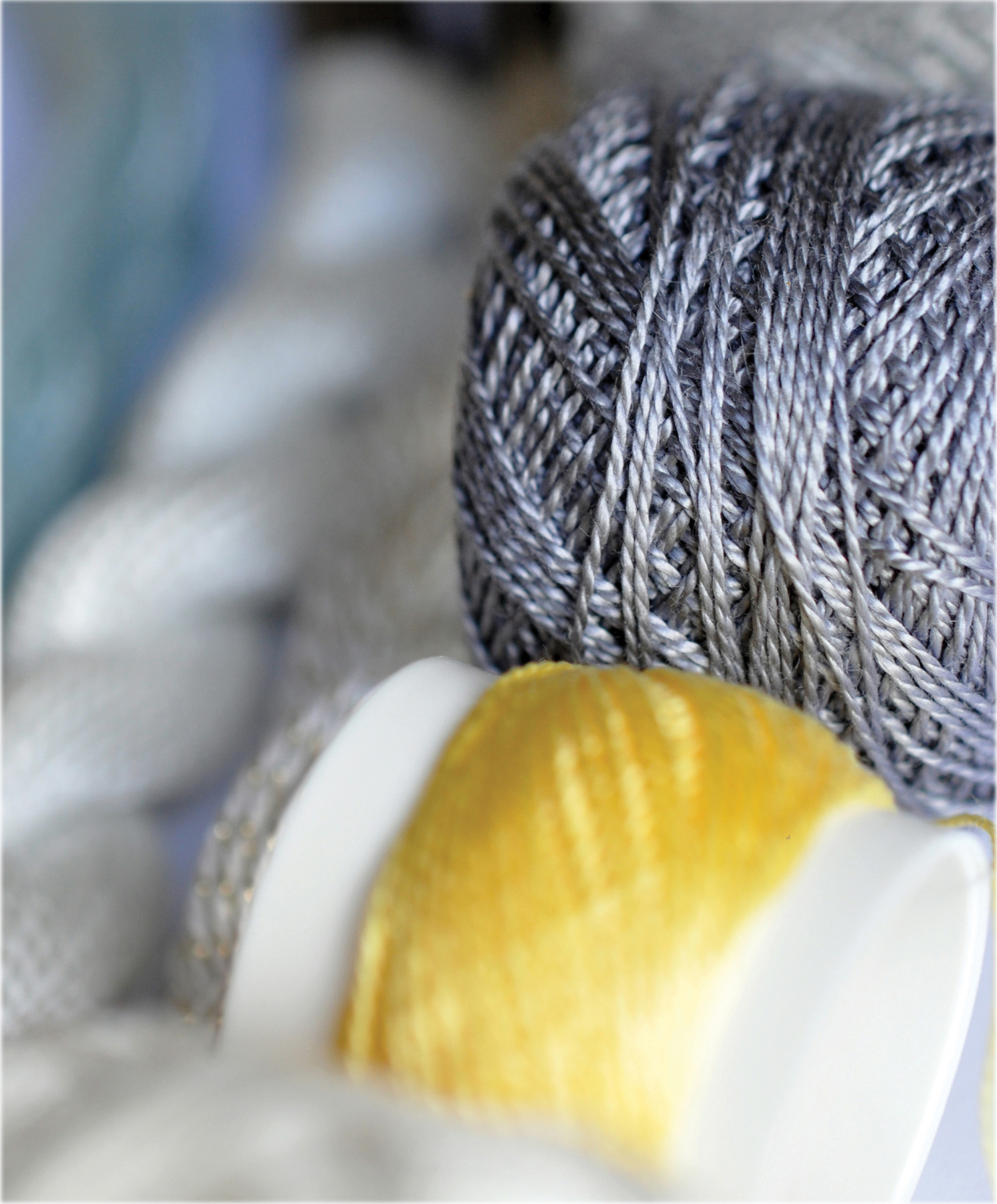
 C ONTENTS
C ONTENTS
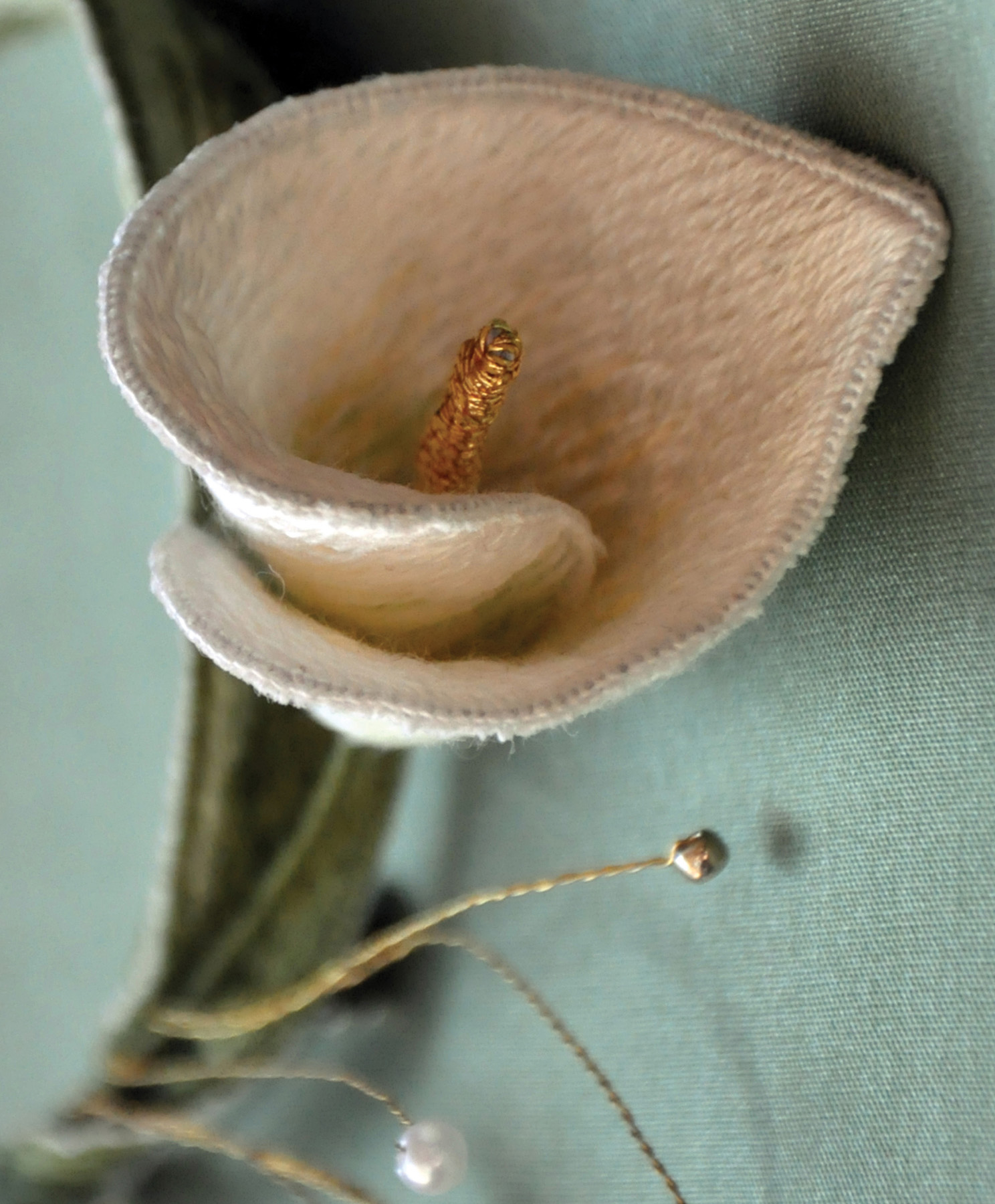
A stumpwork Calla Lily brooch created using long and short stitch in stranded cotton, three-dimensional wired edges, metallic thread-wrapped wires and beads.
 A CKNOWLEDGEMENTS
A CKNOWLEDGEMENTS
T o start, I would especially like to thank my husband Andrew for his enduring support, enthusiasm and encouragement, not only during the process of writing this book but throughout my career and with all of my artistic endeavours. I have been amazed and touched by his eagerness to turn a hand at whatever he can do to help, whether it be acting as the occasional photographer, proofreader, design consultant or tea maker, and I am sure that he now knows a lot more about embroidery than perhaps he will admit to!
A special thank you also goes to my dear friend Lizzy Pye. We have spent many years stitching together since we started our embroidery journey as apprentices at the Royal School of Needlework in 2006. Her motivation, kindness and inspiration along the way has been invaluable.
I am also incredibly grateful to all of my family and friends for their continual support and understanding which has led to my success at turning a passion and hobby into a career.
I would like to give thanks to Becky Quine, Rachel Doyle, Sophie Long, Auburn Lucas, Kate Barlow, Amy Burt, Angela Bishop and Sharon Shaw who generously agreed to have their stumpwork embroidery pieces featured in this book.
Thanks must also be given to the Pennybatch Gallery for their continued advice and skill in framing my work, to Natalie Quine and Liz Hughes for their wonderful proofreading talents and to The Royal School of Needlework, especially Bryna Black and Amberley McSloy for their assistance.
Lastly, I would like to thank Carol and Peter Lansberry for the loan of a precious historical example of stumpwork embroidery.
Without all of you, this book would never have happened.
A BOUT THE A UTHOR
Helen Richman is a hand embroiderer and textile artist based in Somerset. Founder of The Bluebird Embroidery Company, which showcases her embroidered artwork and own range of embroidery kits, she also regularly completes high profile commissions for organizations such as the Royal Mail and Ely Cathedral. Helen is a member of the Somerset Guild of Craftsmen.
Helens embroidery journey began when she joined The Royal School of Needlework and completed the three-year apprenticeship, gaining expert knowledge in many fields of hand embroidery. She now regularly teaches at the school and has taught classes across the UK as well as in the United States and Canada. www.bluebirdembroidery.co.uk

I NTRODUCTION

W HAT IS S TUMPWORK AND W HY IS IT SO P OPULAR ?
Stumpwork is a highly decorative and imaginative embroidery technique which typically uses raised and padded stitches which are rich in texture. These are combined with a whole array of surface stitches, embellishments and endless types of thread and fabric to create designs which can be bold, intricate and colourful. There are almost no rules with stumpwork; indeed, many embroidery techniques such as beadwork, ribbon work, metal thread work, silk shading, needlelace, appliqu and canvas work can be utilized and incorporated together into a design. The freedom of choice with this technique allows the embroiderer to make the most of the wide variety of beautiful materials which are available to purchase from craft shops and haberdasheries today. This freedom and the scope of designs available lends to the popularity of this technique as it allows for creativity and experimentation, resulting in embroidery work which can be extremely personal.
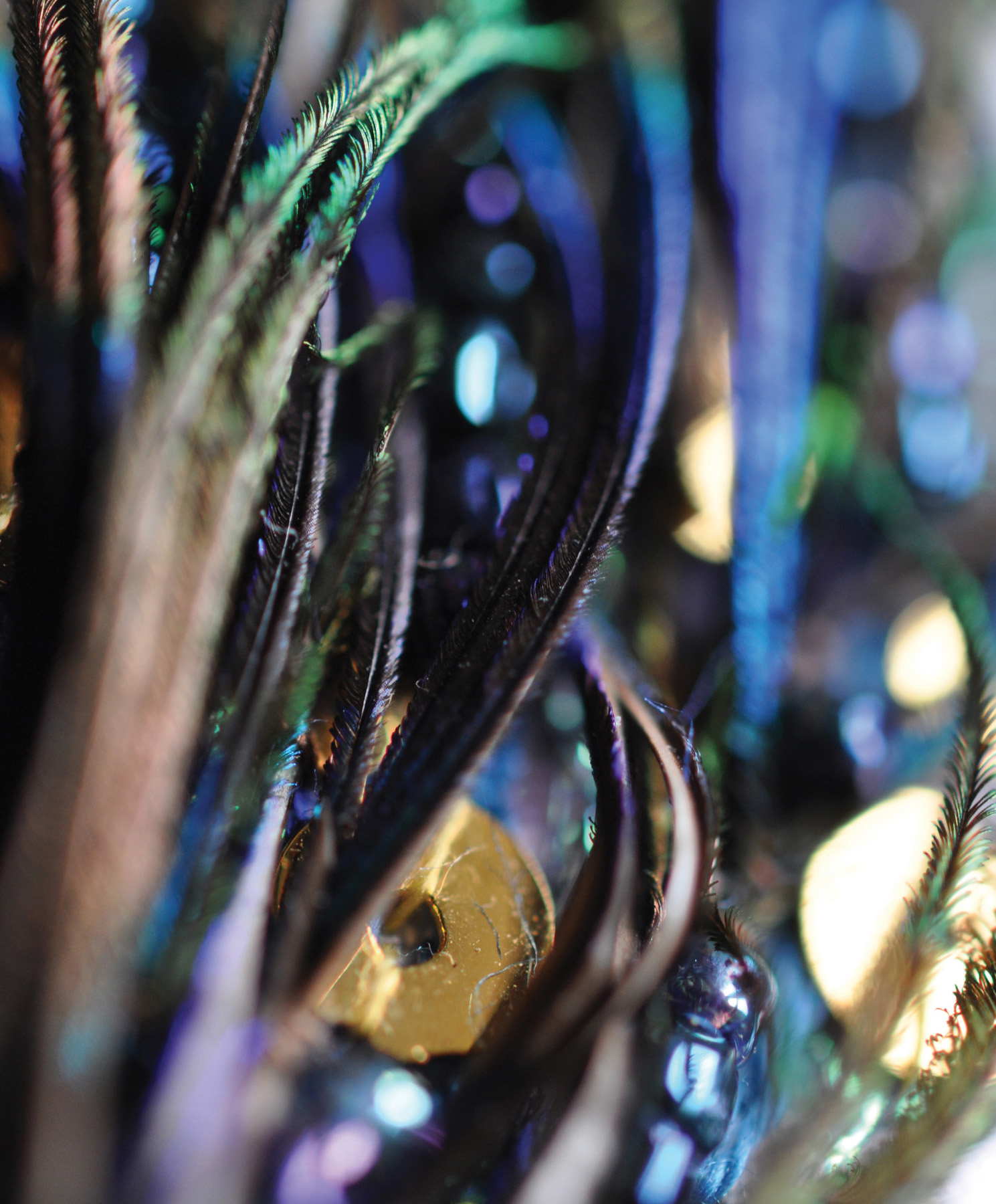
A close view of the Peacock Mirror project.
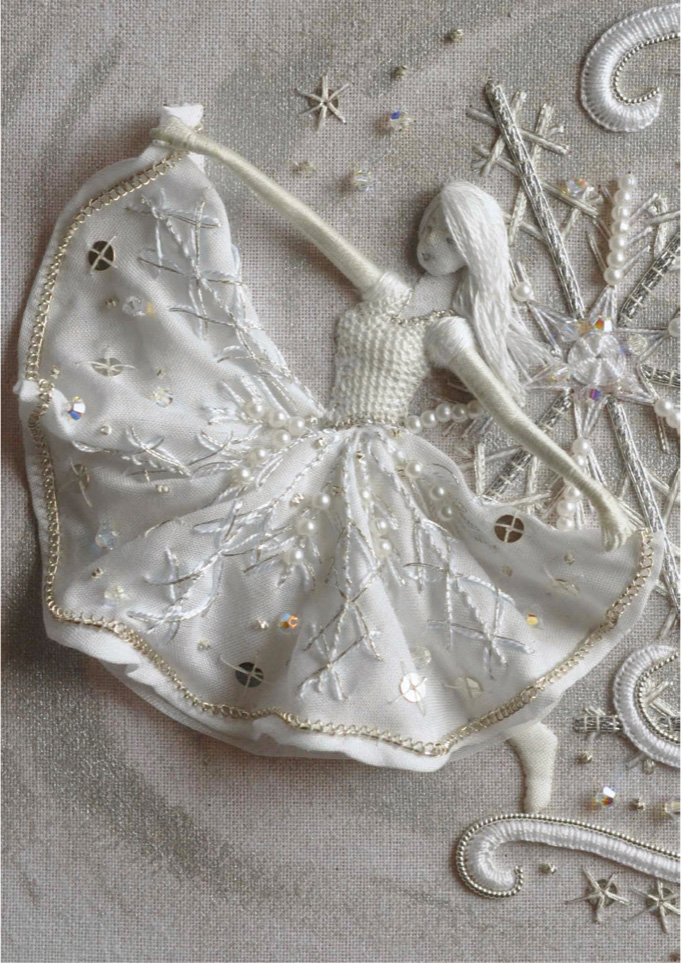
Detail of the A Flourish of Frost project.
Using this book
This book will guide the reader through the process of creating their own piece of stumpwork embroidery. It begins with an introduction to the appropriate materials, equipment and tools needed for this style of embroidery before preparing for stitching. A wide range of stitches and techniques have been illustrated to aid with the completion of several projects. The reader will then learn how to design their own piece of stumpwork embroidery, the steps necessary to do so and the considerations which must be made. The process is then rounded off with finishing, presenting and caring for the work.
A B RIEF H ISTORY OF THE S TUMPWORK E MBROIDERY T ECHNIQUE
Stumpwork is an embroidery technique which became incredibly popular during the seventeenth century. It was used to decorate all sorts of items from mirror frames, book covers and boxes, to gloves, purses and pin cushions.
The term stumpwork has only been used since the nineteenth century, presumably for the small carved pieces of boxwood which were covered in silk or hidden under stitching. These pieces of wood gave shape to the hands and faces of the little figures that featured in the designs. Before this time, stumpwork was simply known as raised work or embossed work. It is thought that the technique was first influenced by a style of European ecclesiastic embroidery which can be dated back to the fifteenth century. This work used highly padded, intricate and naturalistic designs, created using padding made out of fabric, hemp or leather which was then covered in silk, satin and metal threads. The background fabric was often painted and embroidered. This style of work slowly started to make an appearance on domestic and decorative items which probably fuelled the fashion for decorating household objects with stumpwork later on.

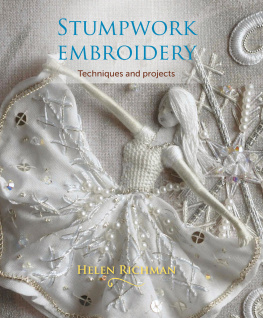


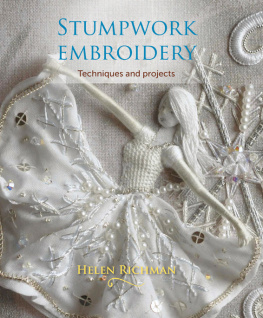





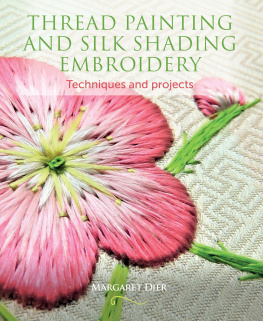









 C ONTENTS
C ONTENTS




